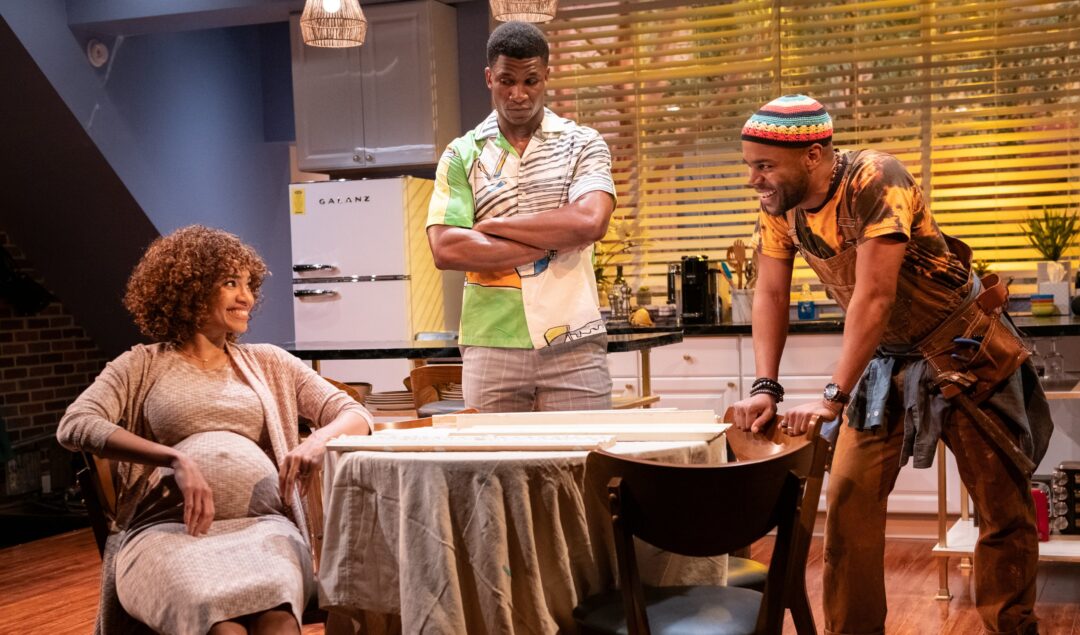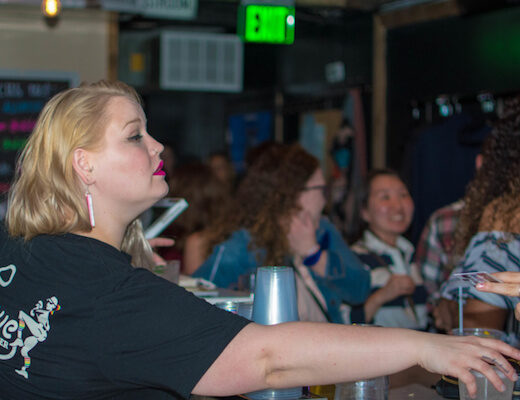By Imani Nyame
This article was originally published in DC Trending, here.
If homeownership is the last pitstop to fulfilling the American dream, then it makes sense that Black Americans are encouraged to stay woke. In a country where the vast majority of homeowners are White it can be a cause for celebration when a Black family can afford to dream. Buying a house is a step towards Black intergenerational wealth. Yet, they may unknowingly contribute to the gentrification that plagues many urban communities experiencing rising property values. But what happens when the gentrifier isn’t an outsider? Or, if the perpetrator moves back to the very place they ran from?
These questions are confronted in the world premiere of Pulitzer Prize winning playwright, James Ijame’s, Good Bones commissioned by Studio Theatre. Directed by frequent Studio Theatre collaborator, Psalmayene 24, this production is intimate. It features a thrust stage set in the kitchen of married, first time homeowners, Aisha (played by Cara Ricketts) and Travis (played by Joel Ashur) expecting their first born. As they employ the help of neighborhood contracter, Earl (played by Johnny Ramey) to help them finish their renovations in time for the birth of their baby, they connect with one another and to their neighborhood through candid conversation and some much needed life reality checks.
The performance’s frank dialogue showcases each character’s undeniably strong sense of self. So it’s fitting that the majority of this play takes place in the midst of discourse. The common denominators are the headstrong and lively Aisha, and the passionate, yet hotheaded, Earl both of which are natives of the unnamed city meant to represent the many just like it. Aisha left her hometown and attained higher education to became a civil engineer; Whereas, Earl stayed. Earl is an intrinsic part of his community and is troubled by the general disregard for its rich history. Ramey’s “Earl” is provocative and his intensity toes the line that establishes his and Aisha’s professional relationship. Earl sees Aisha in ways that Travis cannot. Ultimately, their relatability nudges Aisha towards an impossible “what if,” forced to reckon with who she would have become if she had stayed.
Costume designer, Moyenda Kulemeka’s, amplifies the charcter’s archetypes and personal politics seamlessly through wardrobe. Travis, aloof, young and wealthy, sports muscle bearing polos matched with trendy shorts, and a signature high-top fade which likens him to a modern day, Carlton (The Fresh Prince). This is a stark contrast to Earls’ modest, earth-toned outfits, and splashes of color coming from what seems to be a vast collection of accessories including a kufi adorning his crown.
There’s a fifth character, outside of the main characters, that plays a pivotal role in the story — the ghost of Aisha and Travis’ new home. Sound master Megumi Katayamaand lighting (by William D’eugenio) work together to create an ever present spirit. Random sounds, the laughter of children, and the dimness of the kitchen at different times of the day serve as a reminder that time doesn’t exist in a vacuum.
Earl says, to Aisha, “…the past isn’t the past…it’s here. Now.”
Ultimately, Good Bones is nothing short of some good kitchen table talk. It’s a homespun, neighborly discussion about taking responsibility for one’s community by being conscious of and actively engaged in the structures that exist within it





No Comments